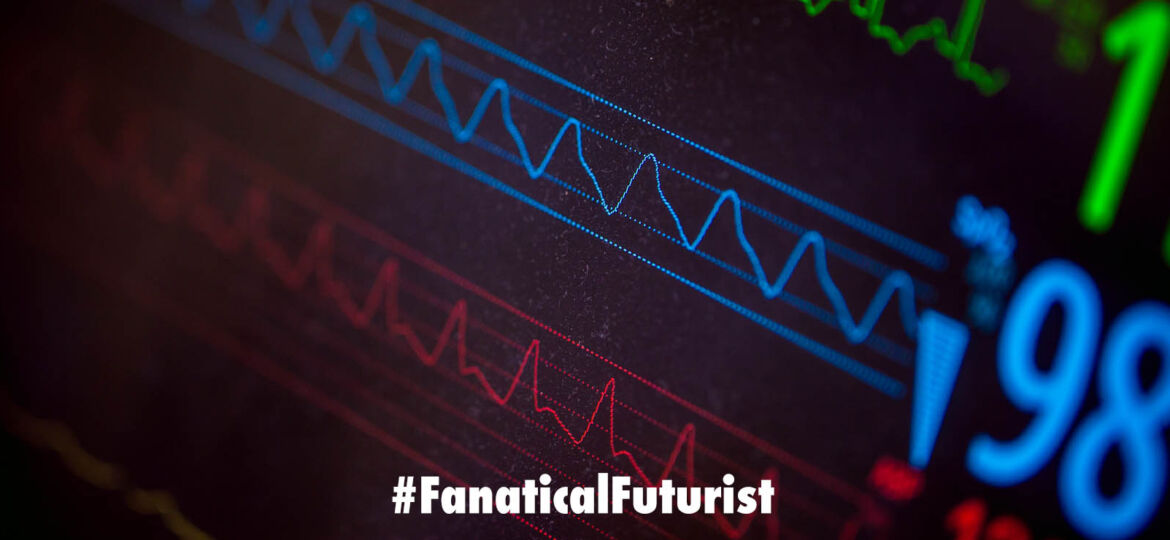
WHY THIS MATTERS IN BRIEF
People often underestimate the power of sensors and light, and now a new light sensor with 200% efficiency opens the door to a new kind of remote health monitoring breakthrough.
 Love the Exponential Future? Join our XPotential Community, future proof yourself with courses from XPotential University, read about exponential tech and trends, connect, watch a keynote, or browse my blog.
Love the Exponential Future? Join our XPotential Community, future proof yourself with courses from XPotential University, read about exponential tech and trends, connect, watch a keynote, or browse my blog.
I’ve spoken before about a new kind of sensor that can read your brainwaves from across a room, but now the days of being able to use a sensor on the opposite side of the room to read your body’s vital stats has gotten closer as well after scientists announced that they’ve produced a sensor that converts light into an electrical signal at an astonishing 200 percent efficiency – a seemingly impossible figure that was achieved through the weirdness of quantum physics.
Such is the sensitivity of the device known as a photodiode, the team responsible for its innovation says it could potentially be used in technology that monitors a person’s vital signs – including heartbeat or respiration rate – without anything needing to be inserted or even attached to the body which could end up being a breakthrough for all kinds of new tele-health applications.
Photodiode efficiency is typically measured as the number of available light particles it can convert into electrical signals. Here, the scientists are talking about something closely related, but a bit more specific: photoelectron yield, or the number of electrons generated by photons hitting the sensor.
The photoelectron yield of a photodiode is determined by its quantum efficiency – the essential capability of a material to produce charge-carrying particles at a fundamental level, rather than the amount of electrical power produced.
“[T]his sounds incredible, but, we’re not talking about normal energy efficiency here,” says chemical engineer Rene Janssen, from the Eindhoven University of Technology in the Netherlands.
“What counts in the world of photodiodes is quantum efficiency. Instead of the total amount of solar energy, it counts the number of photons that the diode converts into electrons.”
As a starting point, the team worked on a device that combined two types of solar panel cells, perovskite and organic. By stacking cells so light that’s missed by one layer is picked up by another, the researchers achieved 70 percent quantum efficiency.
To push this figure higher, additional green light was introduced. The sensor was also optimized to improve its ability to filter different types of light, and respond to no light at all. This pushed the quantum efficiency of the photodiode past 200 percent, although at this stage it’s not clear exactly why that boost is happening.
The key might be the way photodiodes produce a current. Photons excite electrons in the photodiode material, causing them to migrate and create a build-up of charge. The researchers hypothesize that the green light might release electrons on one layer, which are converted into current only when photons strike a different layer.
“We think that the additional green light leads to a build-up of electrons in the perovskite layer,” says chemical engineer Riccardo Ollearo, from the Eindhoven University of Technology. “This acts as a reservoir of charges that is released when infrared photons are absorbed in the organic layer.”
“In other words, every infrared photon that gets through and is converted into an electron, gets company from a bonus electron, leading to an efficiency of 200 per cent or more.”
A more efficient photodiode is also a more sensitive photodiode – one that’s better able to observe very small changes in light from greater distances. This brings us back to measuring beating hearts and respiration levels.
Using their super-thin photodiode, one that’s a hundred times thinner than a sheet of newspaper, the researchers measured small changes in infrared light reflected back from a finger from a distance of 130 centimeters (51.2 inches). This was shown to match blood pressure and heart rate, much as a smartwatch sensor does but operating from across a table.
With a similar set up, the team measured respiration rates from slight chest movements. There’s potential here for all sorts of monitoring and medical purposes, if the technology can be successfully developed from the lab stage.
“We want to see if we can further improve the device, for instance by making it quicker,” says Janssen. “We also want to explore whether we can clinically test the device.”
The research has been published in Science Advances.
















